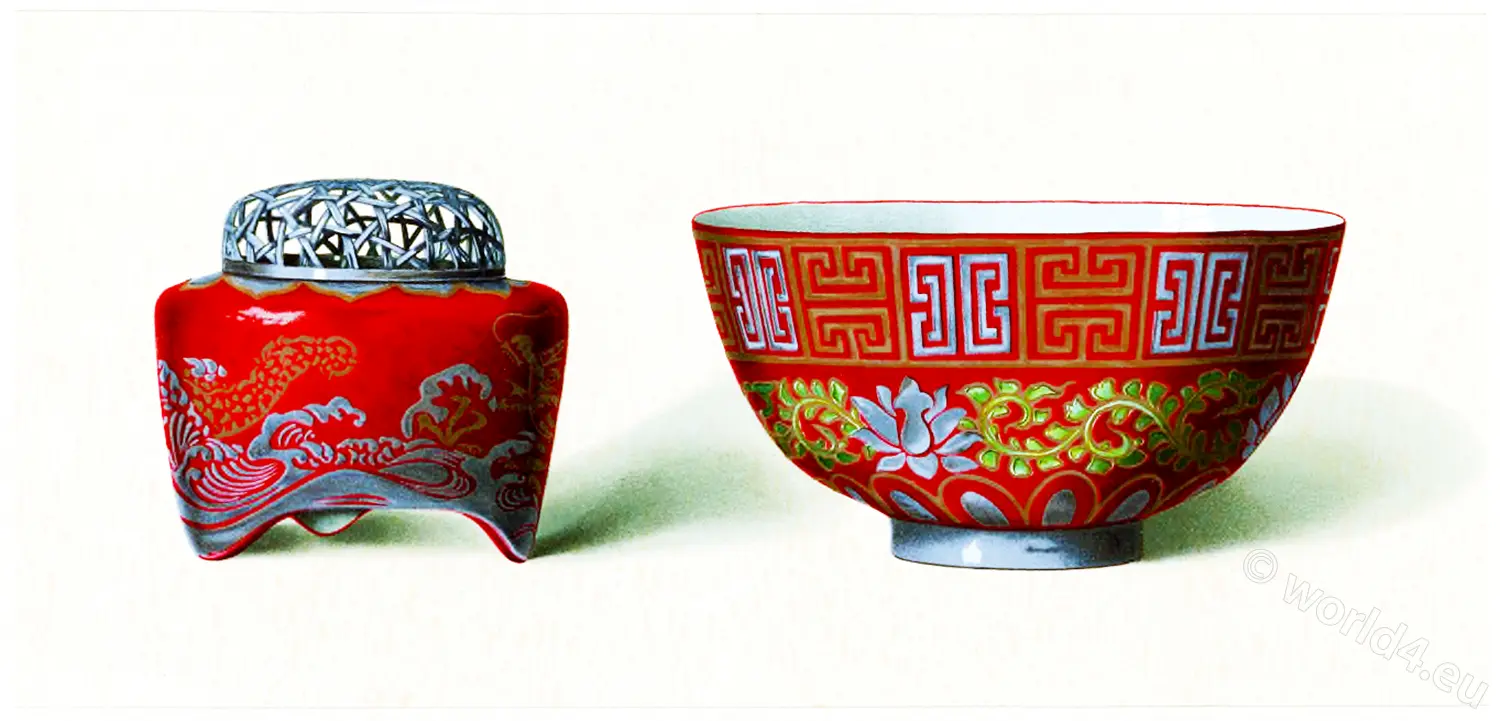KO KUTANI AND AO KUTANI. (九谷焼, Kutani-yaki)
Ko-kutani (old Kutani, 古九谷), from the 17th and early 18th centuries.
Ao-kutani also Saikō-Kutani (Revival Kutani), from the resumed production in the 19th century.

A bowl (hachi) of 17th century , Ko-kutani, Kaga Japan,
by James Lord Bowes.
This example, which differs in every respect from the later works of the Kutani factories, and was for many years thought to be Chinese, has been identified by the Japanese connoisseurs Mr. Hayashi and Mr. Matsuo as the work of Tamora Gonzayemon; the Hizen potter who, in the period of Kwanei, 1624-1643, originated the manufacture of pottery in the province of Kaga; the decoration is also identified as the work of Kuzumi Morikage, a distinguished member of the Kano school of painters, who went to Kaga in the period of Manji, 1658-1660, and devoted himself to the decoration of the productions of Gonzayemon.
It is of semi-porcelain, enamelled in close imitation of grey granite, and decorated upon this ground-work, in the interior with a Chinese landscape and river scene, and upon the exterior with the figures of nine of the Sixteen Rakan, namely, Inkata Sonja, Battara Sonja, Batsunabashi Sonja, Butsutara Sonja, Nakasaina Sonja, Handaka Sonja, Dakaharita Sonja, Sohinda Sonja, and Ashita Sonja; the figures are not drawn in the manner in which it is customary to depict these characters, but are apparently burlesqued, for they are shown engaged in fun and frolic instead of in sedate contemplation.
The painting is executed in green, red, blue, purple, and black of the tints used by Chinese artists of the period of the Ming dynasty no gold is used.
There is neither the signature of the maker nor of the painter upon this piece, but, as Japanese experts say, “it is signed all over.” Diameter in. (See Plate XXVI.)
Source: Japanese pottery, with notes describing the thoughts and subjects employed in its decoration, and illustrations from examples in the Bowes collection by James Lord Bowes (1834-1899). Vol 2. Liverpool, E. Howell, 1890.
Superordinate: History of Kutani ceramic. Kaga, Japan.
Discover more from World4 Costume Culture History
Subscribe to get the latest posts sent to your email.







